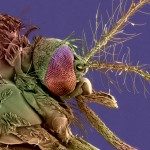Link to Pubmed [PMID] – 36943525
Link to DOI – 10.1007/s00705-023-05726-5
Arch Virol 2023 Mar; 168(4): 115
The consequences of Zika virus (ZIKV) infections were limited to sporadic mild diseases until almost a decade ago, when epidemic outbreaks took place, with quick spread into the Americas. Simultaneously, novel severe neurological manifestations of ZIKV infections were identified, including congenital microcephaly. However, why the epidemic strains behave differently is not yet completely understood, and many questions remain about the actual significance of genetic variations in the epidemiology and biology of ZIKV. In this study, we analysed a large number of viral sequences to identify genes with different levels of variability and patterns of genomic variations that could be associated with ZIKV diversity. We compared numerous epidemic strains with pre-epidemic strains, using the BWA-mem algorithm, and we also examined specific variations among the epidemic ZIKV strains derived from microcephaly cases. We identified several viral genes with dissimilar mutation rates among the ZIKV strain groups and novel protein variation profiles that might be associated with epidemiological particularities. Finally, we assessed the impact of the detected changes on the structure and stability of the NS1, NS5, and E proteins using the I-TASSER, trRosetta, and RaptorX modelling algorithms, and we found some interesting variations that might help to explain the heterogeneous features of the diverse ZIKA strains. This work contributes to the identification of genetic differences in the ZIKV genome that might have a phenotypic impact, providing a basis for future experimental analysis to elucidate the genetic causes of the recent ZIKV emergency.

